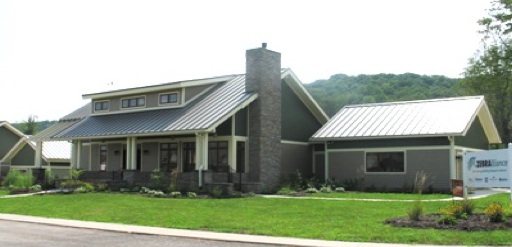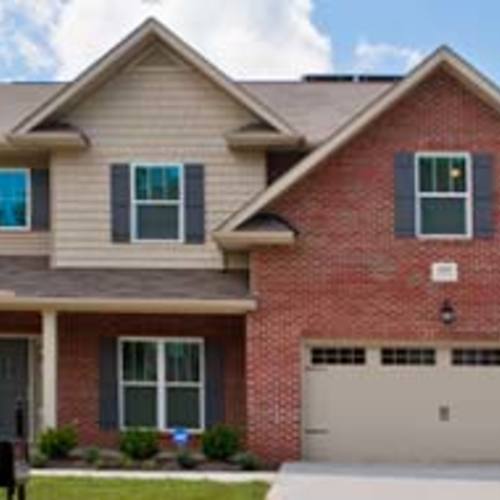
Image Credit: ZEBRAlliance
Ever since its expansion was mandated by a dramatic boost in funding from the federal stimulus package, the Weatherization Assistance Program has had significant successes and endured a few struggles, including a relatively slow rollout, administrative snafus, and, in some communities, setbacks due to substandard work.
In terms of boosting the energy efficiency of homes of low-income homeowners, though, it has done quite well. In a 24-page technical memorandum released in March, for example, the Oak Ridge National Laboratory calculates that the WAP has reduced annual heating and cooling bills (based on 2010 prices) by an average of $436 among households in their first year after they had been weatherized.
Trying to sell invisible improvements
Still, energy efficiency retrofits can be a hard sell, as the National Association of Home Builders has noted in discussions pegged to which remodeling projects seem to be faring best during the downturn. NAHB’s Remodeling Market Index has, for quite some time, been reading below 50, indicating that more remodelers report that market activity is declining than report that it is increasing. Because energy retrofits – as opposed to, say, kitchen remodels – typically are hidden in the walls, they are, in the current market, generally less popular, NAHB notes, and when it comes to real estate appraisals, those improvements often are overlooked.
Even government agencies that administer weatherization programs whose services are offset by subsidies have to hone their pitches to homeowners to help them fully understand the potential benefits of an energy efficiency retrofit: A report published in September by Lawrence Berkeley National Laboratory, titled “Driving Demand for Home Energy Improvements,” analyzes 14 case studies of retrofit projects in the U.S. that are, for the most part, notably successful. The purpose of the report is to help policy makers understand what homeowners are likely to find appealing – beyond dry data on reducing carbon dioxide emissions – about weatherization, including its effect on the health, comfort, and financial well-being of their home’s occupants.
Knoxville stories
A recent story published by the Knoxville News Sentinel presented an overview of weatherization activity in eastern Tennessee, and highlights the effects government incentives and interest in energy savings can have on the market.
Rich Construction, a general and mechanical contractor based in Lenoir City, has weatherized 177 homes through the Knoxville-Knox County Community Action Committee’s home weatherization program, and renovated and weatherized several others in collaboration with Knox Housing Partnership, a development company specializing in serving low-income homeowners and renters.
Gordy Noe, president of Pioneer Heating and Air, told the paper that a summer heat wave in Knoxville, budding interest in energy efficiency, and the company’s alliance with the Tennessee Valley Authority’s Energy Right program, which offers rebates on energy efficient cooling and heating systems, have propelled the company through “the best year we’ve had in 30 years.”
“One (reason) is that we have so many different things that we do now,” Noe added. “We don’t just do air conditioning. We are doing geothermal, (repairing) existing ducts and systems and things that people overlook.”
In addition, Schaad Companies, one of the region’s largest homebuilders, has been delving seriously into home renovation and energy efficiency through its partnership with ORNL, for which it built four homes as part of a project called the Zero Energy Building Research Alliance, or ZEBRAlliance. Each of the homes uses a different envelope-construction strategy whose performance will, of course, be monitored by ORNL and TVA researchers.
Schaad also is offering energy efficiency renovation services to the broader market, including to owners of Schaad-built homes. “We think we bring a little more to the table,” Chris Ooten, Schaad chief operating officer, told the Knoxville News Sentinel. “We know that (home) better than almost everybody. … We built the house.”
Weatherization psychology
Jeff Christian, the ORNL buildings technologies researcher who headed the ZEBRAlliance project, is now exploring energy efficiency retrofit strategies – and the reasons homeowners might or might not choose to make them. Part of his research involves a set of 13 existing homes of various types and vintages. The goal of the existing-home retrofits is an energy savings of 40% in each building.
Christian’s research also will focus on the motivations – and levels of satisfaction or disappointment – of the homeowners who have considered or undertaken energy efficiency improvements. That work is being funded separately by a Department of Energy grant and conducted in partnership with Owens Corning. His mission is at once simple and enormously complex. “I’m trying to study human behavior,” he said.
Weekly Newsletter
Get building science and energy efficiency advice, plus special offers, in your inbox.












One Comment
Thanks for the P.R.
I work for Knox Housing Partnership and am the Project Manager for the houses Rich Construction is working on rehabbing. Just a few notes , KHP is a private non-profit but we are committed to affordable and sustainable housing for low income persons. This particular project is a grant using funds from the Tennessee Housing Development Agency provided by HUD and is part of the Neighborhood Stablization Program (NSP1). KHP is using this money to perform energy and healthy homes upgrades such as new HVAC units, new sealed duct work, air sealing and upgraded insulation, Energy Star doors and windows, Energy Star appliances, Water Sense faucets and commodes and in some cases sealed crawl spaces along with other general updating. In the end these houses that were foreclosures will be energy efficient, healthy, and affordable.
Log in or create an account to post a comment.
Sign up Log in